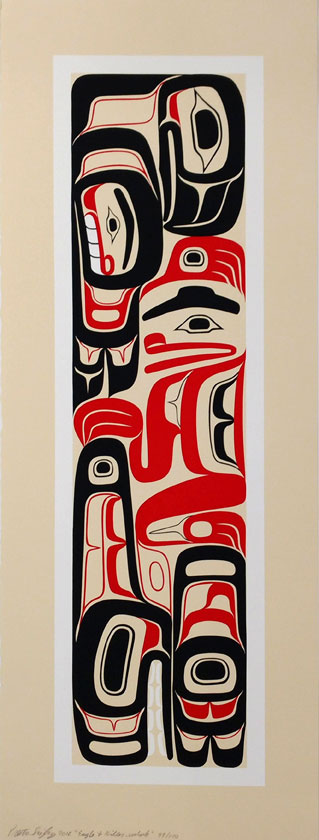Serigraphs from the Pacific Northwest

This exhibition showcases Pacific Northwest coast ‘formline’ serigraphs from Tlingit artist Preston Singletary and Coast Salish printmakers Peter and Araquin Boome.
Formline is a distinctive style of art common to the Indigenous nations of the Pacific Northwest coast and Alaska. Each nation, and indeed each artist, has their own subtle yet distinctive stylistic differences. The word ‘formline’ is an English translation of a more complex and nuanced term in the Haida language.
Serigraphy or silk screen printing is a two-dimensional art form producing hand-pulled, original fine art prints. It is a medium often favoured by artists of this region to translate imagery more traditionally found in three-dimensional material culture onto paper.
Examples of formline art in traditional cultures are totem poles, bentwood boxes, feast dishes, spindle whorls, rattles, masks, canoes and canoe paddles. These items would usually be carved from aromatic red cedar wood and painted with natural pigments.
The imagery in this exhibition represents stylised animals, birds, fish and humans. Transformation is a common theme in which the human is seen within an animal form. Such transformation is associated with ceremonial songs, dances and storytelling.
Preston Singletary is a celebrated glassblower whose magnificent glass pieces can be found in museum collections across the world. His iconography often features Killer Whale with a very distinct blowhole, a species with whom he feels a particular affinity. His choice of imagery also reflects his tribal moiety or clan affiliations.